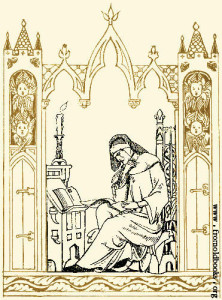Foucault, Michel. “The Archaeology of Knowledge and the Discourse on Language.” New York: Vintage Books, 1972. Print.
Parts 3-5:
The second half of Archaeology proved both daunting and illuminating. However, I must confess that I would probably have to read the book one or two times more to feel as though I am in a position to interrogate any of Foucault’s methods or conclusions. Instead, I found it helpful to isolate small threads from his overall argument and see how they might be woven into the overall theme of our course. So I selected key quotations that really seemed to have direct connections to our course objectives, our recent HTW activities, and our other three authors (Biesecker, Bitzer, and Vatz).
First, a quick summary of the second section: a key principle seems to be that Foucault is pushing back against schools of theory and history that depend heavily on the established and immovable structures of dominant historical and cultural analytical practices. In this final half of the book, he pits the traditional “history of ideas” against his own definition of archaeology as a means of analyzing discourses and their functions.
He seems to assert that the disadvantage of applying uniformity-creating models of interpretation is that they create a structure that does not allow for difference or alternatives … variations that may allow for alternative cultural discourses. He frequently refers to these alternatives as, “discontinuities, ruptures, gaps” (169). Because the “history of ideas” theoretical model relies on analyzing discourses via linear, succession-based order systems, thereby creating a set of absolutes, Foucault considers it “untrustworthy” (166). Like Biesecker, Foucault considers the “difference” a viable and more productive locus of study because it allows us to consider discourses as “a space of multiple dissensions; a set of different oppositions whose levels and roles” can be “described” as a means of understanding knowledge (Foucault 155). His theory / not-theory of Archaeology allows for the inclusion of the unexpected and deviations in order to consider what I will call “the big picture” or potential network of possible connections — Foucault, after all, is concerned more with the way Archaeology reveals “relationships” (162) rather than static objects of time and place (the nodes themselves).
Minding The Gap:
“A discursive formation is not … an ideal…It is rather a space of multiple dissensions; a set of different oppositions whose levels and roles must be described.” (Foucault 155).
This focus on difference and relationships allows Foucault to point his analytical efforts toward the more productive areas of relationships, and as we explore networks, I find that the inter-connections are often where the action is. He writes, “Archaeology also reveals relations between discursive formations and non-discursive domains (institutions, political events, economic practices and processes)” (162). The purpose? In his words, to “map, in a particular discursive practice, the point at which [these multiple dissensions] are constituted, to define the form they assume, the relations that they have with each other” (155). In other words, what might a close examination of these networks reveal about “the way it works”?
Thinking back to the activity on buses, I’m reminded of all of those data packets traversing back and forth between nodes — or objects secured in “history.” Foucault seems to be resisting traditional means of theorizing subject matter (and thus, knowledge) as overly restrictive and limited precisely because the “ideas” become monolithic places along a timeline. As a result, such linear focus may cause us to miss a “gap” — and while that may not result in the sort of unfortunate accident suffered by a subway rider, the loss to knowledge and understanding is of serious concern to Foucault.
In sum, the “take-away” lesson I see here — the one that I find connects to our other readings and our exploration of networks — is Foucault’s emphasis on the importance of the “gaps” and discursive functions to our understanding of and analysis of discourse. If we continue to trod the beaten path (a history of ideas), we are more likely to simply ignore the anomalies and exceptions, the new and untried — such a path might (especially in English Studies and Composition Theories) create a narrow focus that limits what we teach and how we teach. For example, looking
at the recent history of Composition, digital spaces were not (and some might say are still not) considered worthy of academic writing or inquiry. Yet many scholars have posited that they open avenues for student expression and critical thinking that expand upon traditional “history of ideas” or writing theories — I would argue — to the benefit of 21st century student writers.
To close, the following quotation from Foucault stands out to me as encapsulating the potentiality of what we are studying this term: exploring and mapping networks and potential connections, opening new spaces for active exploration and study.
“By deriving in this way the contradiction between two theses from a certain domain of objects, from its delimitations and divisions, one does not discover a point of conciliation…. One defines the locus in which it takes place; it reveals the place where the two branches of the alternative join; it localizes the divergence and the place where the two discourses are juxtaposed. The theory of structure is not a common postulate…. By taking contradictions as objects to be described, archaeological analysis…tries to determine the extent and form of the gap that separates them. In relation to a history of ideas that attempts to melt contradictions in the…unity of an overall figure…. Archaeology describes the different spaces of dissension” (153).
My closing question will be this: How will networks and network theory transform our approach to knowledge-building or knowledge-making this semester, given Foucault’s charge to pay attention to or define the objects of our analysis (nodes vs. relationships)?





